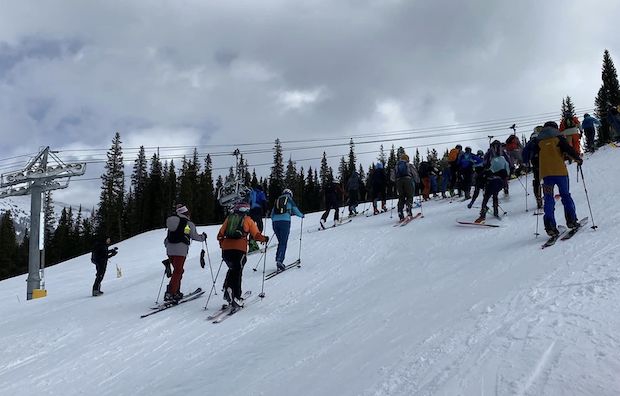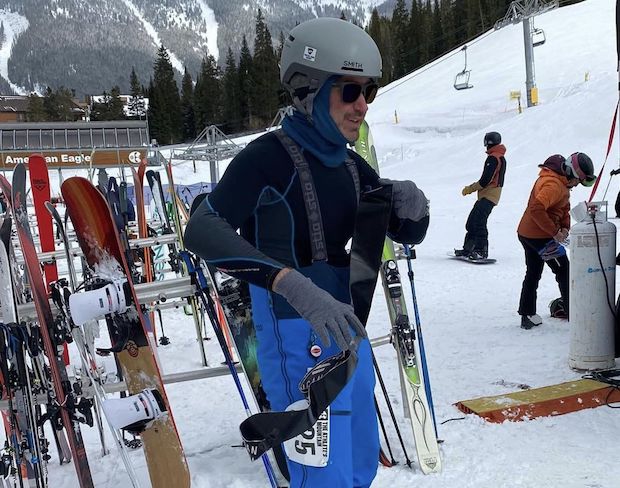Getting Back to the Roots

If last week’s USA Triathlon membership fiasco told us anything, it’s that the word “multisport” is not equivalent with the word “triathlon.” Some of the most outspoken members of Team USA were not triathletes in the traditional sense at all; they’re duathletes, or aqua bikers, or even winter sports members. Triathlon might be the name on the door, but it’s this amorphous “multisport” thing that brings us all together.
I don’t know if I identify as a triathlete anymore. (I know, bold admission for the editor-in-chief of this site.) It’s been five years since I’ve finished a triathlon. I’m entered into one thus far this season, which is my big, dumb idea for the year, and I’ll probably add at least one more as part of this series — more on that in a moment. But what I’ve come to realize is that traditional triathlon, outside of the biggest and dumbest challenges, doesn’t hold the same spark it did for me as a participant.
I think there’s a variety of factors for that. First is a little bit of the lack of adventure associated with it. When you first come to the sport, there’s always that element of “can I actually do this thing” that creates that blessed combination of anxiety and excitement. As I stand here, I pretty much know I could get my way through any race. It wouldn’t necessarily be pretty, but that “can I do this?” factor is gone.
Similarly is the cookie-cutter nature of a lot of our courses. This is most often thrown as a dig at IRONMAN, especially here in the United States, but it’s across the board. Ocean swims have been replaced with downriver, paper bag ones. Bike courses have become flatter. Run courses are equally unexciting or removing some of the key challenges. There are thankfully some holdouts on the course difficulty front. And those tend to be the big events that are still selling out — see, for instance, Oceanside 70.3 or IRONMAN Lake Placid.
But, as triathlon becomes more expensive — partially due to inflation, partially due to towns and cities seeking more for their permits (look no further than the recent Malibu permit drama), partially due to insurance going through the roof — there are only so many times we can go to the same well. Large commercial races are going to be like visiting a Michelin-starred restaurant — pricey, something you do once a year, and only once. And by “large,” that encompasses both your expected international brands, but it’s probably going to include most of your regional-sized RDs grappling to provide an independent event that is still, largely, the same basic product.
So with that in mind, it’s time to shine a light on the different things. Things that march to the beat of a different drummer. Different disciplines. Different distances. Things that force participants to question, a little bit, “can I do this?” That original feeling that I think drew most of us to multisport in the first place.
I’m going to try to do at least one of these types of things a month. And the first one was a doozy — the NE Rando Race Series event dubbed “The Bear” at Stratton Mountain in Vermont.

The NE Rando Race Series is a collection of SkiMo races at various New England mountains. Races at least include uphill skinning and a transition to downhill skiing. Some events also include mandatory boot-packing segments. For the Stratton event, it was a pretty straightforward affair, with three total laps — a skin to the summit of the mountain, transition, and then downhill on the available double-black diamond trail.
I decided to register race morning — registration available until 15 minutes before the start time — once I got my daughter off to her race program. I was, per my training plan, supposed to ride for two hours when we got home from the mountain at 4 PM. Knowing myself, there was approximately a zero percent chance of that ride happening. I figured it’d be about the same amount of time going uphill, so…racing it was!
Total cost: $75. Total participants: 11. Temperature at the start: 4. Over 4,000 feet of vertical climbed over the three laps. Number of times I questioned my sanity: too many to count. Total amount of fun: immeasurable.
Now, granted, that’s all a bunch of Type II fun. Proper SkiMo racing is hard. Within the first 100 yards the true leaders were simply gone, practically running on their skis up the hill. I was very happy to keep within steady distance of the race director for the first lap, trying to pace myself. Because, ultimately, those questions of “can I actually do this thing” and “just what have I gotten myself into” were ever-present. Particularly as, on the third lap, cramping and exhaustion set in.
I entered the race with three goals: to finish, to not be dead last, and to not get lapped by the winner. I managed to do all of them — barely, as the winner finished just as I exited for my third lap. And after more than two hours of racing, two of us finished at the exact same time. It was just fun. Ultimately that’s what our multisport endeavors have to be — and what I’ll be choosing to do the rest of the year.
Now to just start finding some events to fill out that calendar with…


Start the discussion at slowtwitch.northend.network